
HUE JOURNAL OF MEDICINE AND PHARMACY ISSN 3030-4318; eISSN: 3030-4326HUE JOURNAL OF MEDICINE AND PHARMACY ISSN 3030-4318; eISSN: 3030-4326
78 79
Hue Journal of Medicine and Pharmacy, Volume 15, No.2/2025 Hue Journal of Medicine and Pharmacy, Volume 15, No.2/2025
Evaluate the influence of enamel-shade composite thickness on the
overall color of aesthetic dental restorations
Dang Minh Huy1*, Nguyen Thi Thao Ly1, Nguyen Ho Phuong Mai2,
Tran Thi Huyen Phuong1, Tran Thien Man1
(1) Faculty of Odonto-Stomatology, University of Medicine and Pharmacy, Hue University
(2) Center of Odonto- Stomatology, Hue Central Hospital
Abstract
Background: Composite materials are widely used in aesthetic dental restorations due to their advantages,
including minimal invasive preparation, high mechanical strength, adhesive durability, biocompatibility,
time and cost-effectiveness. In composite layering techniques, material thickness significantly impacts the
aesthetic outcome. Objectives: This study investigates the effect of enamel-shade composite thickness on
the final color values of restorations using a two-layer technique to replace enamel and dentine. Materials
and Method: Forty-five A2 enamel-shade composite discs were created from three composite groups:
DenFil (Vericom Corp.), Harmonize (Kerr), and Beautifil II (Shofu Inc.) with five thicknesses: 0.3, 0.5, 1.0,
1.5, and 2.0 mm. Parameters measured included translucency, chroma, value, and color difference. Samples
were photographed against black-white backgrounds and a 3.0 mm thick OA3 dentine-shade composite
background. Color parameters (L, a, b) were collected using image analysis software to assess translucency,
chroma, value, and color difference. Results: Translucency and chroma were inversely proportional to
thickness for the three composite groups. With value, in the DenFil group, increased thickness decreased
value, while no statistically significant correlation was found in the other two groups. When comparing the
restoration color with the same enamel-shade composite thickness, no significant differences were found
between Harmonize and Beautifil II, but DenFil significantly differed. Conclusion: In the two-layer technique
for replacing enamel and dentine, enamel-shade composite thickness affects restoration color characteristics,
varying among composite materials.
Keywords: composite thickness; translucency; chroma; value; aesthetic dental restorations.
*Corresponding Author: Dang Minh Huy. Email: dmhuy@huemed-univ.edu.vn
Received: 10/6/2024; Accepted: 20/3/2025; Published: 28/4/2025
DOI: 10.34071/jmp.2025.2.12
1. INTRODUCTION
One challenge in aesthetic dentistry is achieving
maximum shade matching between the restorative
material and natural tooth tissue. According to
Munsell’s color theory, three basic color properties
are hue, chroma, and value [1]. The CIE Lab color
space, built on this theory and the human eye’s color
perception, is widely used in dentistry. In this color
space, each shade is encoded with three coordinates:
L, which is related to value; a, which refers to red to
green; and b, which refers to yellow to blue [2, 3].
Among these primary color properties, the human
eye is most sensitive to the value [3]. In addition
to hue, chroma, and value, translucency, which is
the degree of light transmission, is another critical
aesthetic characteristic of natural teeth [4]. Natural
tooth color is primarily determined by enamel and
dentine, which have different optical properties.
The color of natural teeth changes anatomically
from the cervical third to the incisal third due to
variations in enamel and dentine thickness [5].
Therefore, selecting an appropriate thickness of
composites, which is intimately related to mimicking
the translucency and value of enamel, as well as the
hue and chroma of dentine, is crucial for achieving
aesthetic success with layering techniques.
Various direct layering methods are proposed
for the anterior region, including mono-laminar,
bi-laminar, and multi-laminar techniques. When
comparing these methods, the two-layer composite
technique, which replaces enamel and dentine, stands
out for its simplicity, time efficiency, and aesthetic
effectiveness [6]. Selecting the correct shade for the
restorative material is vital to mimicking the natural
tooth. Currently, shade selection methods can be
categorised into two groups: visual techniques using
shade guides (VITA or non-VITA) and instrumental
techniques (colorimeters/ spectrophotometers or
digital photography combined with image processing
software) [1, 2]. According to some studies, digital
photography combined with image processing
software is gradually becoming reliable for
composite color matching in clinical practice [7]. This
allows clinicians to evaluate the restoration region

HUE JOURNAL OF MEDICINE AND PHARMACY ISSN 3030-4318; eISSN: 3030-4326HUE JOURNAL OF MEDICINE AND PHARMACY ISSN 3030-4318; eISSN: 3030-4326
78 79
Hue Journal of Medicine and Pharmacy, Volume 15, No.2/2025 Hue Journal of Medicine and Pharmacy, Volume 15, No.2/2025
and adjacent areas, record anatomical details on the
tooth surface, enhance laboratory communication
and follow up on the treatment outcomes [2, 7].
Recent studies have evaluated the impact of
composite thickness on restoration color, both
clinical and in-vitro, utilizing various evaluation
methods and parameters [4, 8]. These studies
consistently highlight that thickness is a critical factor
significantly influencing the aesthetic properties of
the restoration. Despite the available findings, there
is a substantial demand for additional research in
Vietnam concerning the influence of composite
thickness on cosmetic restorations. The lack of
local data is crucial to underscore the importance
of conducting targeted investigations in this field.
Therefore, we conducted a study to investigate the
effect of enamel-shade composite thickness on
restoration color using a two-layer technique that
replaces enamel and dentine. Our research focused
on main color criteria such as translucency, chroma,
value, and color difference. The null hypothesis posits
that changes in the thickness of the enamel-shade
composite do not affect the restoration’s color. Based
on this study, we hope to offer valuable insights and
practical guidelines to help clinicians in Vietnam
achieve optimal aesthetic outcomes in dental
restorations.
2. MATERIALS AND METHOD
Forty-five A2 enamel-shade composite discs were
created from three composite materials: DenFil
(Vericom Corp.), Harmonize (Kerr), and Beautifil
II (Shofu Inc.) (Table 1). All sample discs had the
same diameter and were made in five thicknesses:
0.3, 0.5, 1.0, 1.5, and 2.0 mm, with three discs per
thickness. Three materials belong to two composite
types: microhybrid (DenFil) and nanohybrid (Kerr
and Beautifil II). The samples must meet the
following criteria: correct thickness (±0.02 mm), no
air bubbles, and no fractures.
Table 1. Materials Used in the Study
Group Type Manufacturer Composition
Matrix Filler
1DenFil microhybrid Vericom Corp.,
South Korea
Bis-GMA,
TEGDMA
80 wt% Barium
aluminosilicate, Fumed silica
(0.04 - 1 µm)
2 Harmonize nanohybrid Kerr, USA
Bis-GMA,
Bis-EMA,
TEGDMA
81 wt% Spherical zirconia-
silica nano, Barium-
aluminum-borosilicate glass
(5 - 400 nm)
3 Beautifil II nanohybrid/
giomer
Shofu Inc.,
Japan
Bis-GMA,
TEGDMA
83.3 wt% S-PRG filler,
multifunctional glass
(0.01 - 4 µm and 10 - 20 nm)
Specimen preparation
The sample discs were created with a diameter
of 12 mm and five thicknesses (0.3, 0.5, 1.0, 1.5,
2.0 mm) using a sample production kit from Smile
Line (Porcelain Sampler, Smile Line) and light-cured
for 60 seconds (X-Cure – Woodpecker, China, with a
power output of 1000 - 1200 mW/cm²), as described
by Ferraris et al. (2014) [4]. For each composite
group and thickness, 3 sample discs were created.
Thus, the sample size for the study is 45 (n=15). To
simulate the two-layer technique and evaluate the
effect of enamel-shade composite thickness on
restoration color, the study used a fixed dentine-
shade composite background: a 3.0 mm thick A3
dentine-shade disc (Beautifil II). The composite
discs that met the sample criteria were stored in a
desiccator for seven days before imaging.
Assessing the effect of enamel-shade composite
thickness on the color of restoration with a two-layer
technique
The sample imaging, image calibration and
measuring color parameters from images were
determined, as detailed by S. Hein et al. (2017) [7].
For sample imaging, the CieLab color parameters
(L,a,b) were assessed through images taken with a
digital camera using a cross-polarization filter and a
white balance card (eLAB Prime, Germany) in fixed
conditions. For image calibration, the L value of the
white balance card area on the images was adjusted
to the manufacturer’s standard: standard L=79
using Adobe Lightroom Classic CC 2019 software
(Adobe Inc., USA). For measuring color parameters
from images, the samples’ CIE Lab parameters (L,
a, b) were recorded using Adobe Lightroom Classic

HUE JOURNAL OF MEDICINE AND PHARMACY ISSN 3030-4318; eISSN: 3030-4326HUE JOURNAL OF MEDICINE AND PHARMACY ISSN 3030-4318; eISSN: 3030-4326
80 81
Hue Journal of Medicine and Pharmacy, Volume 15, No.2/2025 Hue Journal of Medicine and Pharmacy, Volume 15, No.2/2025
CC 2019 software (Adobe Inc., USA) at multiple
positions. These parameters were denoted based on
the background
L, a, b values measured on a black
background
L, a, b values measured on a white
background
L, a, b values measured on a dentine
background
From the L, a, and b values, the parameters of
translucency, chroma, value, and color difference
were calculated using the following formulas:
• Chroma ( ):
• Value ( ):
• Translucency Parameter (TP):
TP values range from 0 to 100: TP = 0 indicates
complete opacity, and TP = 100 indicates complete
transparency.
• Color Difference (ΔEab):
ΔEab
Where are the differences in
values between two samples of the same
thickness but different composite groups. The ∆Eab
values are denoted as ∆Eab(12), ∆Eab(23), ∆and
Eab(31), corresponding to the color differences
when comparing groups 1 with 2, 2 with 3, and 3
with 1, respectively. An ∆Eab <3.3 means the color
difference is acceptable [10].
Statistical Analysis
The collected color data were calculated
and analyzed using Rstudio and R4.3.0 software
(Posit, PBC). Pearson correlation analysis at a 95%
confidence level was used to evaluate the effect
of thickness on the samples’ color parameters
(translucency, chroma, value). Two-way ANOVA
with Tukey’s post hoc test at a 95% confidence level
was used to determine if there were significant
differences in the color parameters of the samples.
3. RESULTS
3.1. Effect of enamel-shade composite thickness on color parameters of restorations using the two-
layer technique
Figure 1. Changes in Translucency, Chroma, and Value with Thickness

HUE JOURNAL OF MEDICINE AND PHARMACY ISSN 3030-4318; eISSN: 3030-4326HUE JOURNAL OF MEDICINE AND PHARMACY ISSN 3030-4318; eISSN: 3030-4326
80 81
Hue Journal of Medicine and Pharmacy, Volume 15, No.2/2025 Hue Journal of Medicine and Pharmacy, Volume 15, No.2/2025
Figure 2. Results of Pearson Correlation Analysis Showing Correlation Coefficient (r) and p-value for the
Relationship Between Thickness and Translucency, Chroma, and Value
Translucency and Chroma: For all three composite groups, translucency and chroma are inversely
correlated with thickness (r<0) and statistically significant (p<0.05). This means the restoration’s translucency
and chroma decrease as the enamel-shade composite layer’s thickness increases.
Value: For the DenFil group, value is inversely correlated with thickness statistically (r<0, p<0.05). For the
other two groups, there is no statistically significant relationship (p>0.05).
3.2. Comparison of color parameters of restorations using the two-layer technique with the same
thickness for enamel-shade composite
Figure 3. Two-Way ANOVA with Tukey’s Post Hoc Test Evaluating
Differences in Translucency, Chroma, and Value

HUE JOURNAL OF MEDICINE AND PHARMACY ISSN 3030-4318; eISSN: 3030-4326HUE JOURNAL OF MEDICINE AND PHARMACY ISSN 3030-4318; eISSN: 3030-4326
82 83
Hue Journal of Medicine and Pharmacy, Volume 15, No.2/2025 Hue Journal of Medicine and Pharmacy, Volume 15, No.2/2025
When comparing the color parameters
(translucency, chroma, value) of restorations using
the two-layer technique replacing enamel and
dentine with the same thickness for the surveyed
composite groups, there is no statistically significant
difference between the Harmonize and Beautifil II
groups (p>0.05 at all thicknesses). However, there
is a statistically significant difference between
DenFil and the other two groups (p<0.05 at all
thicknesses).
3.3. Color differences of restorations using the
two-layer technique with the same thickness for
enamel-shade composite
Table 2. Evaluation of Color Differences
Using ∆Eab Values
Thickness (mm) ΔEab(12) ΔEab(23) ΔEab(31)
0.3 5.54 2.6 8.1
0.5 9.65 1.93 11.2
1.0 10.4 1.44 11.5
1.5 9.19 1.17 8.6
2.0 8.48 1.64 7.25
When comparing the DenFil group to the
other groups, there is a significant difference in
the restoration color with the same enamel-shade
composite thickness (ΔEab>3.3 at all thicknesses),
with a minor difference at a thickness of 0.3 mm.
However, between Harmonize and Beautifil II
groups, this color difference is within the acceptable
range (ΔEab<3.3 at all thicknesses).
4. DISCUSSION
The translucency of natural enamel decreases
with increasing thickness, corresponding to the
anatomical color changes of teeth. From the incisal
third to the cervical third, enamel becomes thinner,
revealing the underlying dentine and making teeth
appear more opaque and darker [3]. Therefore, a
crucial material replacement for natural enamel
should simulate this optical effect. The inverse
correlation between translucency and composite
thickness in our study, which is illustrated in Figure
1 and Figure 2, aligns with the findings of Kamishima
et al. (2005), Ayako Arimoto et al. (2010), Schmeling
et al. (2012), Ferraris et al. (2014), Layal Jbara et al.
(2019), and Sumi Kang et al. (2023) [4, 11-15]. This
result can be explained by the interaction of light
with composite compositions. Two main composite
components are the resin matrix and fillers, which
differ in refractive index, making composite material
an inhomogeneous medium and, therefore,
translucent [16]. This difference causes light
scattering upon contact with the filler particles
[13, 17]. As the composite thickness increases,
the volume of fillers increases, leading to more
scattering and making the material more opaque.
Several studies have shown that the translucency
of composite is negatively proportional to the filler
content (with constant filler size) [18-20].
As for chroma, Figure 1 and Figure 2 show
a statistically negative correlation between the
restoration’s chroma and enamel-shade composite
thickness. The composites in the research of Ferraris
et al. (2014) and Layal Jbara et al. (2019) are also
reported to have this property [4, 11]. This outcome
is the consequence of the relationship between
composite thickness and translucency. As the
covering layer thickens, its translucency decreases,
reducing the exposure of the underlying layer and
thus lowering the chroma of the restoration. Figure
3 shows that, at the same thickness, the chroma of
the DenFil group is higher than that of the others,
while there is no significant difference between
Harmonize and Beautifil II. This can be explained by
the difference in the materials’ translucency.
Human eyes are most sensitive to value, which is
determined by enamel. Therefore, an ideal enamel-
shade composite needs to reach this characteristic.
The study shows that the value of DenFil composite
restorations decreases when the thickness increases.
This is consistent with the properties of microhybrid
composites observed in the study by Schmeling et
al. (2010), Friebel et al. (2012), Ferraris et al. (2014),
and Ismail et al. (2020) [4, 21, 22, 23]. According to
Figure 1, with a thickness between 0.3 and 1.0mm,
Harmonize and Beautifil II groups appear lighter when
the enamel-shade composite is thicker; however,
the opposite occurs from 1.0 to 2.0 mm. This trend
is similar to the findings of Layal Jbara et al. (2019)
and Kim et al. (2018) for these two nanohybrid
composites [11, 24]. However, when examining UE2
(Micerium), a nanofilled composite, Ferraris et al.
(2014) found that the value of restorations increases
with the thickness of the enamel-shade composite
[4]. Thus, the effect of the composite thickness on
the value of restorations among the microhybrid,
nano-hybrid, and nanofilled groups is different. This
difference can be attributed to the refractive index
and homogeneity of the filler particles in these
materials. Increasing the thickness of natural enamel
makes the teeth lighter. Because of not reaching the
natural enamel’s refractive index (approximately
1.63), most commercial enamel-shade composites
do not possess this optical effect [3, 16]. The
refractive index of the composite increases when the

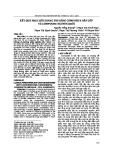
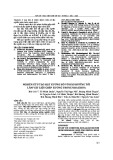




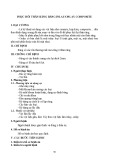
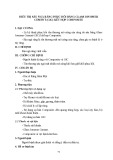
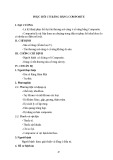
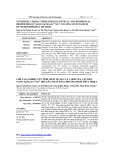


![Bài ôn tập Giải phẫu răng [chuẩn nhất]](https://cdn.tailieu.vn/images/document/thumbnail/2025/20251005/tuyetnhitk1305@gmail.com/135x160/78741759715471.jpg)






![Bài giảng Glass Ionomer Vương Lam Linh: Tổng hợp kiến thức [Mới nhất]](https://cdn.tailieu.vn/images/document/thumbnail/2025/20250908/dangkhoa5304@gmail.com/135x160/90151757385750.jpg)





